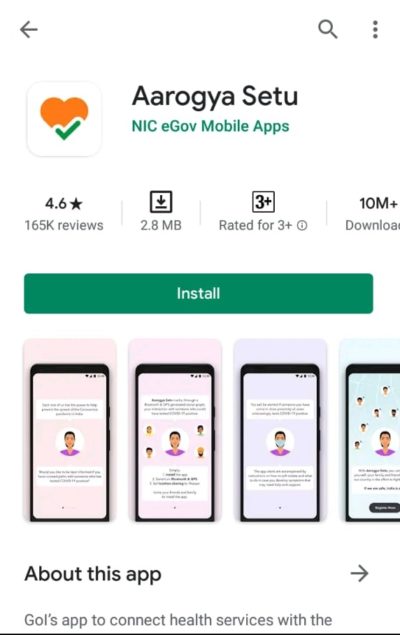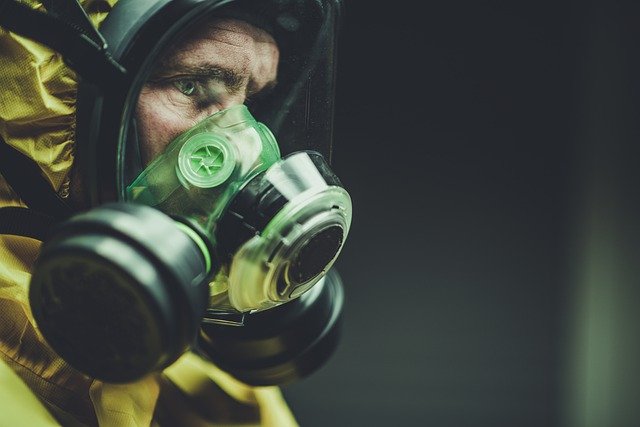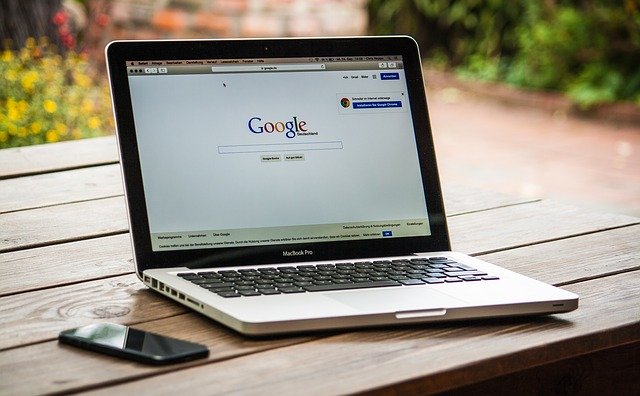~Upasana Khare (@upss_07)
A novel Coronavirus was identified in 31 December 2019 in Wuhan, China which started spreading through bats. This is a new type of virus that has not been previously identified in humans. The virus is highly contagious and has spread globally in no time. The potential of this virus seems to be a serious public health risk. World governments are at work to combat and fight the coronavirus to avoid possible devastating effects. Technology too has joined in this fight to combat the Coronavirus.
These are the various forms of technology which are being used to combat with coronavirus:
Table of Contents
Aarogya Setu app

Aarogya Setu is a tracking application made to combat and fight the spread of the novel coronavirus outbreak in India. Prime Minister Narendra Modi said that the tracking app is an essential tool in the COVID-19 fight. It is also possible to use this form of technology as an e-pass to facilitate travel from one place to another, according to Press Trust of India.
This app helps to track the coronavirus disease (COVID-19) infection by using the smartphone’s GPS system and Bluetooth, it provides information that will help in determining if you have been near a COVID-19 infected person or not.
Ensuring the data is encrypted, the app uses your location to know that the area you are around, comes under the infected areas of the database and also needs an activated Bluetooth to determine if you have been within six feet from the infected person. This app supports 11 languages.
Once you have downloaded the app, you need to register with your mobile number. To enable tracking, location and Bluetooth services need to be kept enabled in your device.
Robots and Drones

In early March, a new isolation ward was opened in Wuhan, China where the coronavirus outbreak started. It is entirely manned by robots that take patient’s temperature, give them food and drugs, and disinfect the ward. China has also used robots in quarantine facilities, and so has Singapore, to clean hospitals.
The use of robots or robotic technology to combat and fight the disease prevents the risk of infections in healthcare workers. In some parts of China, the police have used drones fitted with cameras and loudspeakers to disperse crowds and direct individuals in the streets to return home. The robotic technology is playing an important role in this fight to combat the coronavirus.
Smart Imaging
Smart Imaging is yet another contribution of technology in this fight to combat the coronavirus. In an effort to enable contactless and rapid temperature detection, China has used AI-powered thermal cameras to identify those in a crowd who have a fever and isolated them. The country is also deploying facial-recognition systems to identify those not wearing masks and directing them to wear it.
Location Tracking
Possibly the most commonly used technology by the government in the fight to combat the disease is tracking people’s whereabouts. This can be done through the location information provided by their phones.
The use of this technology has been crucial in the fight to combat the coronavirus. This technology is used to identify where an infected person went before being quarantined and how many people were in close contact with the patient.
Israel has allowed its internal security agency the use of its citizen’s location data for 30 days. South Korea, China and Taiwan have also used location-tracking widely to limit the transmission of the virus. However, in Europe, which has stricter laws on data protection, Germany and Italy are using the location data to identify public places where people are gathering in groups by defying lockdowns. Apple and Google are also working on it.

Mobile Apps
Mobile applications, perhaps are the greatest contributions of technology to us and in this combat fight against COVID-19. A startup in the UK recently launched an app for people to self-report their symptoms. C-19 Covid Symptom Tracker, which was downloaded 7.5 lakh times in three days, helps to identify high-risk areas, among other areas.
South Korea has an app called Corona 100m that has mapped the locations of COVID-19 patients and alerts users if they come within 100 metres of an infected person.
India has also launched an application called Aarogya Setu that will tell users if they came in contact with someone who later tested positive for COVID-19, as reported by ET on March 26. The app will be based on location data obtained from the infected person’s smartphone. The app is also said to use short distance Bluetooth signals between the devices (phones). An example is the Singapore’s TraceTogether app. The app helps authorities trace the contacts of a coronavirus affected patient.
In China, apps developed by Alibaba and Tencent give people a colour code based on their health condition and travel history. This code is decided by a big data-driven algorithm, will determine whether a person gains entry into a mall or a subway station, or can travel between cities.
CCTVs

CCTVs are playing one of the most important roles in this fight to combat the COVID-19.
When a family of three in Kerala’s Pathanamthitta district tested positive for COVID-19 after returning from Italy, local authorities realised the family had visited several places. They had met many people for a week before they were quarantined.
Reviewing CCTV footage from the areas they had visited, was one of the methods the local administration used to track down 900 people, the family could have potentially infected. South Korea and Singapore, are other nations that have made the extensive use of CCTVs in contact-tracing.
Artificial intelligence

Artificial Intelligence (AI) is helping to diagnose and develop a cure for the illness. Several hospitals in China are using AI-based software to scan through CT images of the patient’s lungs to look for signs of infection. The cloud computing resources and supercomputers of several major tech companies such as Tencent, DiDi, and Huawei are being used to fast-track the development of a cure or vaccine for the virus.
AI-powered drug discovery platforms are being used by several companies. They are also mining through databases that have the already-approved medicines (for other illnesses like malaria) to find a cure.
Tele-medicine
This Tele-medicine technology is being used by several large hospitals. Throughout the United States, This technology is being used to safely screen, cure and treat patients from remote places. The Rush University Medical Center in Chicago recently set up a virtual medical line to help to screen patients for coronavirus.
Advanced fabrics offer protection
Companies such as Israeli startup Sonovia hope to arm healthcare systems and others with face masks made from their anti-pathogen, anti-bacterial fabric that relies on metal-oxide nanoparticles to combat with coronavirus.

Chatbots to share information
WeChat which is operated by Tencent is an example of Chatbots. People can access online health consultation services, free of cost by using the chatbots. Chatbots have also been essential communication tools for service providers in the travel and tourism industry. They keep the travellers updated on the latest travel procedures and disruptions in the fight to combat the coronavirus.
Conclusion
These forms of technology are helping in the fight to combat the coronavirus.
The coronavirus, although it’s such a negative aspect of our lives and [in terms of the effect] on other people, actually, I think there is an opportunity here to rethink the whole model of the way we see our patients, certainly around technology, of course.
Dr Shafi Ahmed (Virtual Reality Surgery Pioneer)
The aim is to help to reduce the risk that, for instance, someone infected could come to the surgery and transmit the virus not only to other patients, but healthcare professionals as well, potentially reducing the number of workers, already under strain, that could care for those who are affected.
Image courtesy: Unsplash, Pixabay










Leave a Reply